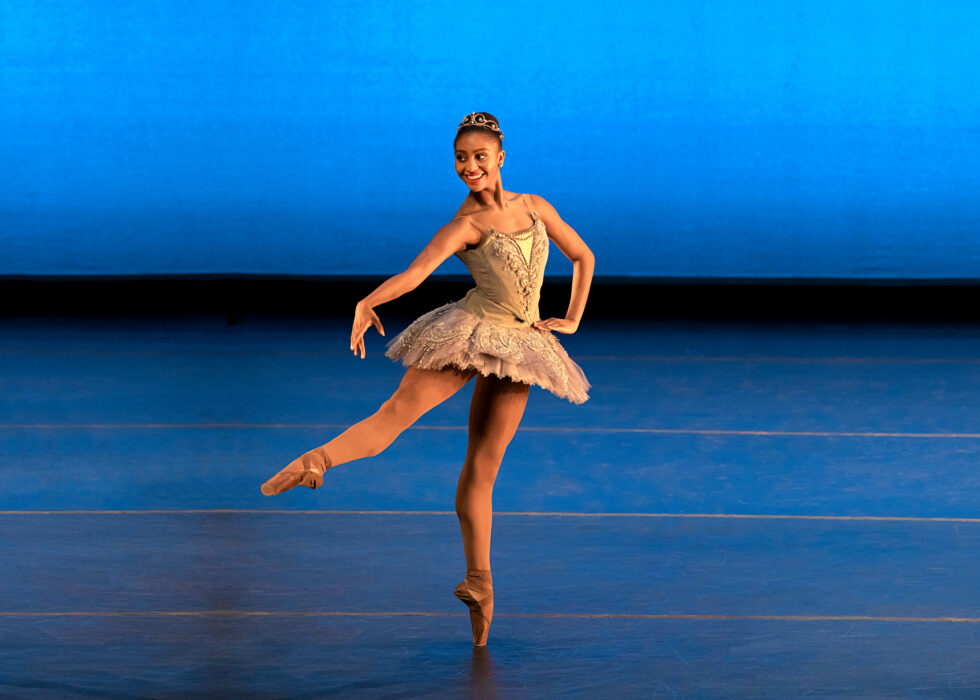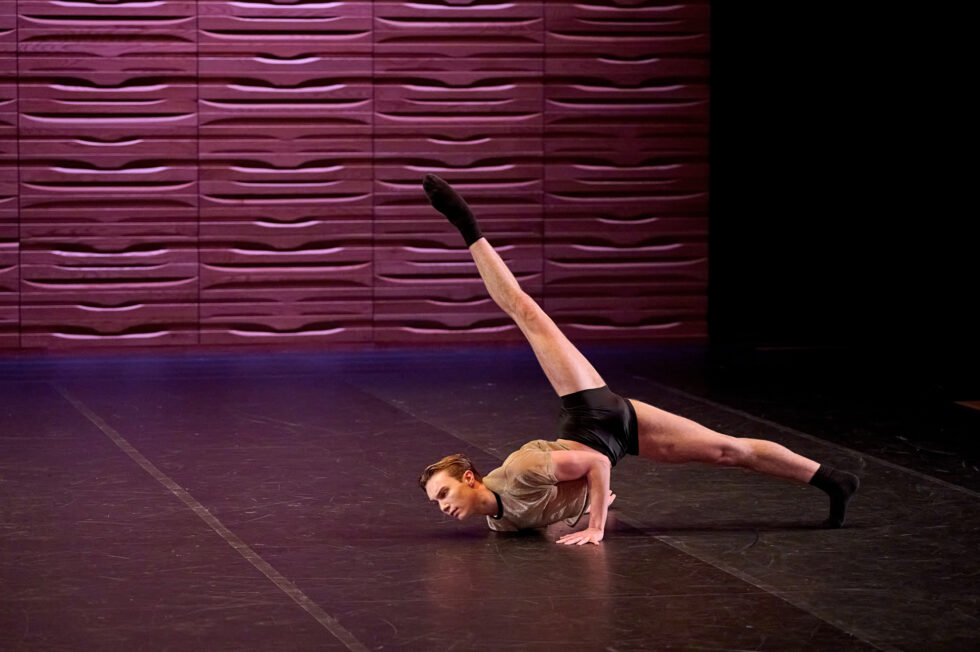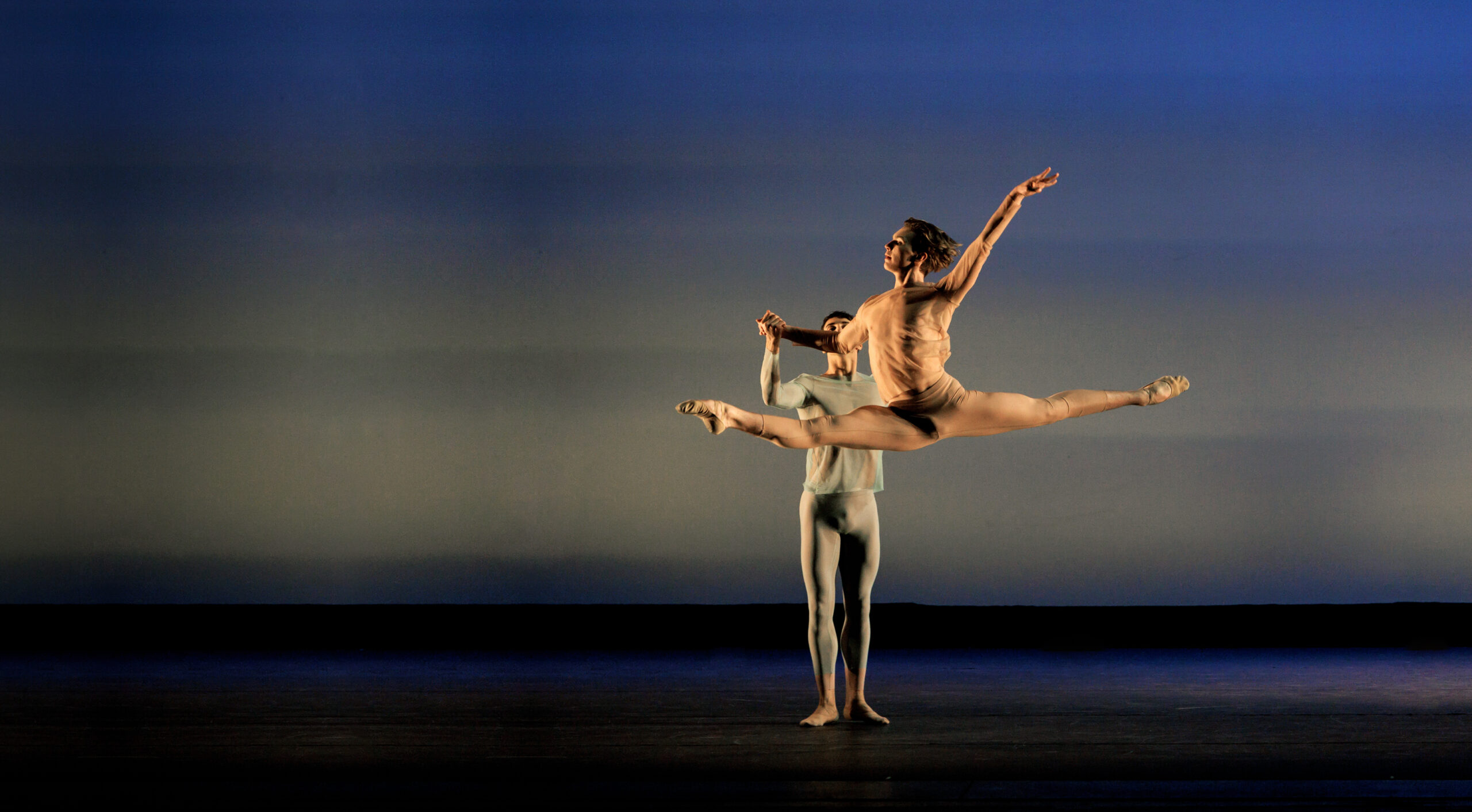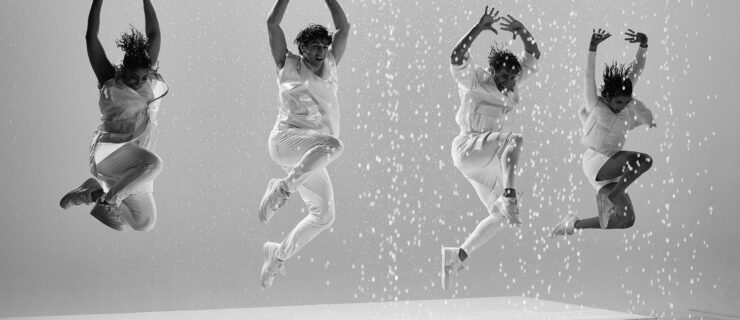Meet 3 Ballet Pros Who Started Out as Comp Kids
For decades, the worlds of ballet and commercial dance were considered separate and distinct, with little overlap between the two. This conventional wisdom has been challenged by the success of artists like Tiler Peck, who participated in competitions as a jazz dancer before joining New York City Ballet and becoming one of its stars. Ballet dancers who spent time competing as students tend to be well positioned for the diverse repertoire of today’s companies, says Peck. “A lot of the competition kids that are in the company, like me and Taylor Stanley, are typically always in the new ballets, and I think it’s because the new choreographers can see that we weren’t just trained classically,” she says. “We have other, more versatile styles of movement within ourselves.”
Peck has noticed that former competitors share a distinctive characteristic: They’re more at ease onstage. “When I first joined the company, my director said, ‘Wow, you have no fear,’ ” she remembers. “It was how I approached everything in dance, and I think that comes from the competition dances. I also think nerves onstage aren’t as bad for those of us who come from that world, perhaps because we are so used to performing. If you do the classical route, you don’t get as many performance opportunities.”
Now, a new generation of competition-kids-turned-ballet-dancers is making its mark. Madison Brown and Brady Farrar, both dancers with American Ballet Theatre Studio Company, have roots in not only dance competitions but competitive TV shows: Brown appeared on Season 2 of NBC’s “World of Dance,” becoming its youngest soloist, and Farrar was on Season 8 of the hit reality show “Dance Moms.” Both also competed extensively in events such as Starbound National Talent Competition, Showstopper, New York City Dance Alliance, and Youth America Grand Prix. New York City Ballet corps member Quinn Starner’s experience also includes YAGP, as well as NUVO Dance Convention and 24 SEVEN Dance Convention—and a televised contest: “So You Think You Can Dance: The Next Generation,” in 2016.
Here’s a look at how Brown, Farrar, and Starner are bringing their comp-kid versatility into the world of professional ballet.
Madison Brown
Florida native Madison Brown has long dreamed of joining the main company at American Ballet Theatre. She spent her early years training at Lents Dance Company in Boca Raton and The Art of Classical Ballet in Pompano Beach. Growing up, she won awards in events ranging from New York City Dance Alliance to Youth America Grand Prix, spent multiple summers as an ABT National Training Scholar, and studied in the pre-professional division of the ABT Jacqueline Kennedy Onassis School before joining ABT Studio Company.

After years of balancing ballet with styles like contemporary and jazz, Brown eventually found herself prioritizing ballet. “By the time I got into Studio Company, I was still able to have all those tools and the knowledge of being able to move my body in different ways, to be able to do choreography in the different pieces of repertory that we do,” she says. In the Studio Company, Brown has performed in such works as Victor Gsovsky’s Grand Pas Classique and Vasily Vainonen’s Flames of Paris.
Brown believes that her competitive experience gave her a strong sense of professionalism. “When you’re doing competitions and conventions, you have to learn how to pick up choreography very quickly,” she says, adding that dancing in large groups of attendees was similar to an audition environment. Brown finds the skills she developed in competitions and conventions helpful as a Studio Company member. “When new choreographers come in to create pieces, it’s easy to tap back into that mental space of knowing how to pick up choreography fast, pay attention to detail, and to make sure that you can do it well,” she says.
Brown says “World of Dance” prepared her for professional success by helping her learn to take and quickly implement corrections. “You get the raw feedback right then and there,” she explains, “and you get that so much in a professional rehearsal environment, too.”
Brady Farrar
Miami-born Brady Farrar began dancing at age 5, training at Stars Dance Studio, and spent his childhood winning dance titles. Like Madison Brown and Tiler Peck, Farrar found that his experience in dance competitions honed his professionalism at an early age. “Competing when I was young helped me because I spent a lot of time performing,” he says. “Now that I’m older, I know what to do when I get nervous, or when I have a big performance coming up and I have a lot to do in the show.”

Even while participating in contemporary and jazz competitions as a child, Farrar knew he wanted to dance in a ballet company. “I’ve always had a respect for ballet,” he says, explaining his interest in ballet’s ability to tell a story and evoke strong feelings in an audience through technique. “My personality gravitated towards concert dance and classical ballet. There’s so much beauty in it.”
In American Ballet Theatre Studio Company, Farrar has danced roles in pieces like Balanchine’s Tchaikovsky Pas de Deux and Daniel Ulbricht’s Tatum Pole Boogie. He believes his background competing in different styles enhances his ability to infuse his ballet movement with a human quality. “Dance is human,” he says, “and I think that classical ballet is more of an ethereal and less natural way of moving. Being able to just move your body to music and be comfortable with that helps a lot, not only in ballet, but in other styles too.”
Quinn Starner
Quinn Starner began dancing at age 2 and started competing with her first solo at 5. She continued competing throughout her early training, which included Viva Dance Co. in Monroe, Michigan, Toledo Ballet in Toledo, Ohio, and Indiana Ballet Conservatory in Carmel, Indiana, along with summer programs at the School of American Ballet in 2015 and 2018. She enrolled at SAB full-time in 2018, which preceded her apprenticeship with New York City Ballet in 2021 and entry into its corps the following year.

Ballet was a longtime love. “I always knew I wanted to end up being a ballerina at a company,” says Starner. It was after seeing the company perform in New York City that Starner set her sights on NYCB. “I could see how I could incorporate my experience with contemporary dance, tap, and jazz into this rep,” she says. “I said, ‘This is the perfect place for me.’ ”
Starner cites her comfort onstage, individuality, and musicality as benefits of having competed. “I feel like it’s helped me find my own style in the new ballets we’re dancing and different kinds of rep,” she says. “I think tap also plays a part in the musicality that I use now when I’m dancing.” Starner has the confidence to tackle a broad spectrum of challenging choreography at NYCB, shining as a Doll in George Balanchine’s The Nutcracker and originating featured roles in contemporary works like Kyle Abraham’s Love Letter (on shuffle) and Keerati Jinakunwiphat’s Fortuitous Ash. “When we get to work with outside choreographers, like Kyle Abraham or Jamar Roberts, I try to channel what I’ve learned in contemporary,” she says. “Having that background makes me me.”




